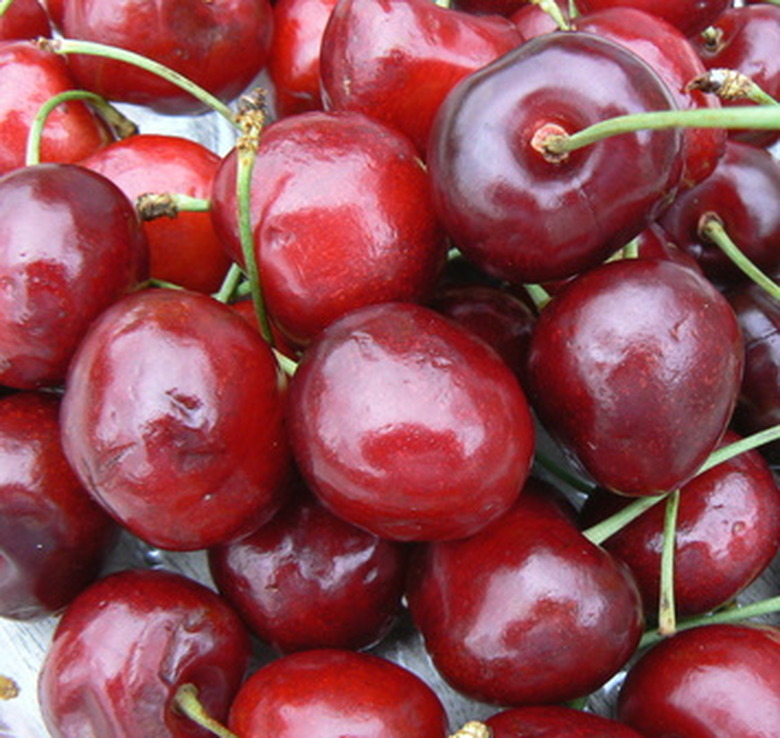What Cherry Trees Can I Plant In Western Washington?
Washington State remains a leading producer of sweet cherries for supermarkets across the United States, but cherries and other fruit crop orchards exist in huge numbers in the eastern and central counties of the state. While many ornamental cherries grow nicely in gardens in western Washington, sweet cherry trees with rootstock resistant to bacterial canker and tolerant of heavy, volcanic soils prove best. Plant multiple trees to yield large fruit crops.
Rootstock
The heavy, wet soils common across western Washington around Puget Sound causes many cherry tree varieties that prosper further east to succumb to fungal and root rot, and fruit-cracking when rains occur as cherries reach maturity. Only purchase sweet cherry trees grafted onto Mazzard F-12-1 roots, which demonstrates excellent resistance to bacterial canker, a destructive disease in this part of the state. Another acceptable rootstock is Sweet Cherry Seedling, also called Mazzard. Trees growing upon Mahaleb rootstock should be avoided unless your garden soil is sandy and well-draining, a condition rarely seen in western Washington.
- Washington State remains a leading producer of sweet cherries for supermarkets across the United States, but cherries and other fruit crop orchards exist in huge numbers in the eastern and central counties of the state.
- Only purchase sweet cherry trees grafted onto Mazzard F-12-1 roots, which demonstrates excellent resistance to bacterial canker, a destructive disease in this part of the state.
Red-fruiting Varieties
Sometimes called "black fruiting" since the ripe color of these fruits leans toward blackened red, red remains the associated color of cherries. Early Berlat ripens in June. Most other recommended red cherry varieties ripen through July. Venus, Sam, Stella and Compact Stella are selections that tend to avoid cracking. According to Washington State University, Van remains the best variety to grow, rivaling Bing, which is not recommended due to its susceptibility to bacterial canker.
Other Colored Fruit Varieties
While no pink or white fruiting sweet cherry trees grow satisfactorily in western Washington, several gold to yellow cherries do. The traditional, "old fashioned" variety Royal Ann remains a good choice, although cracking often occurs on its fruits. Newer varieties prove less likely to crack, but their overall fruit size remains less impressive than those of Royal Ann. These newer varieties include Gold, Corum, Rainier and Bada.
- Sometimes called "black fruiting" since the ripe color of these fruits leans toward blackened red, red remains the associated color of cherries.
- The traditional, "old fashioned" variety Royal Ann remains a good choice, although cracking often occurs on its fruits.
References
- Washington State University: Sweet Cherry Varieties for Western Washington
- "Sunset Western Garden Book;" Editor Kathleen Norris Brenzel; 2007
